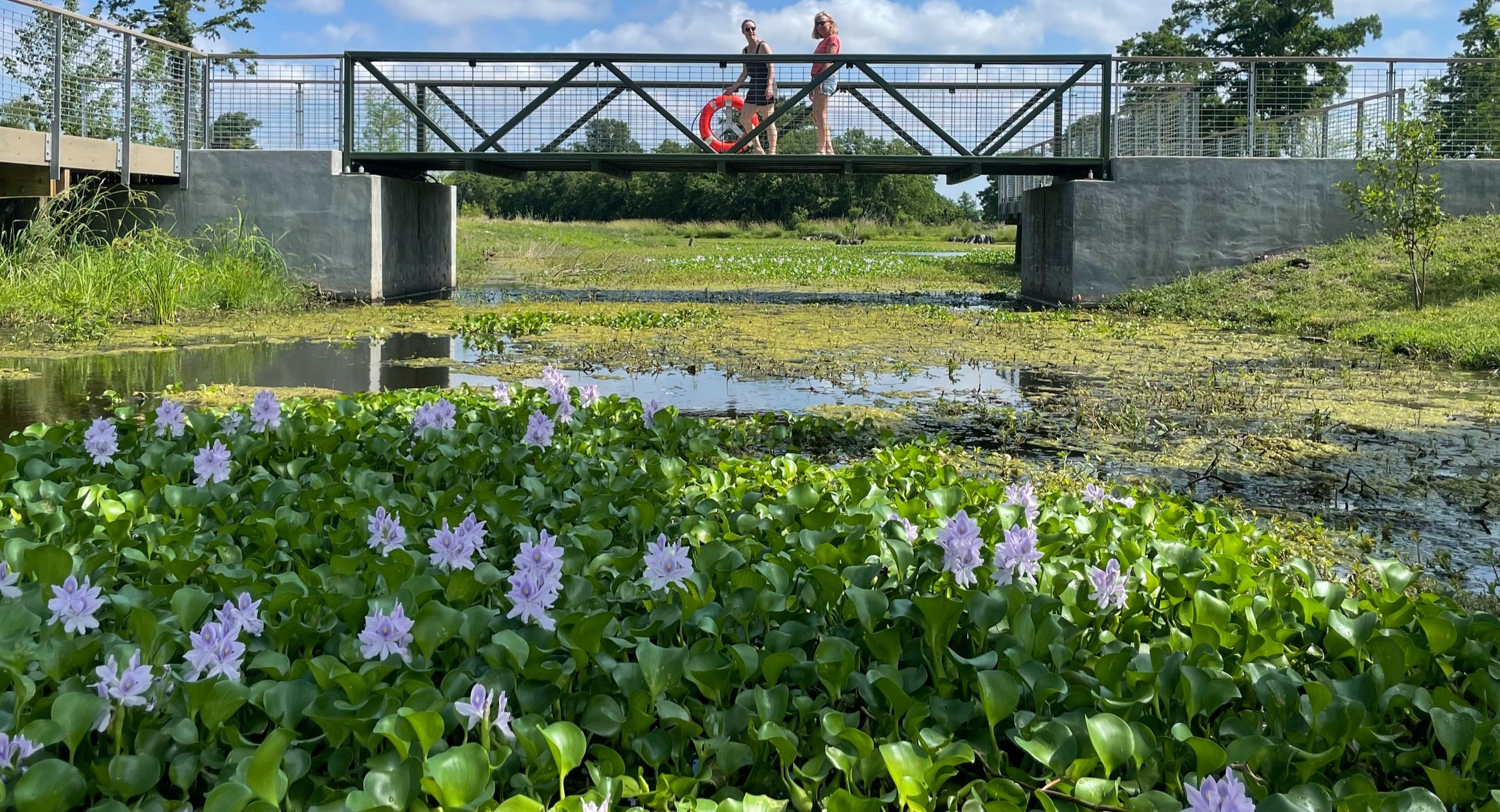
Maintenance
Embrace maintenance and adaptive management as central pillars of living with water and at every stage of projects
Some of the most important work in water management happens after ribbons are cut and fanfare fades. This is the critical but often neglected world of project maintenance. The current approach to project design lacks sufficient guidance on integrating maintenance considerations. Maintenance tends to be an afterthought once a project is completed, creating confusion over who is responsible, or overburdening under-resourced entities. The absence of maintenance planning for installed green infrastructure hinders project impact over time and breeds skepticism within communities that impedes support for additional green infrastructure projects. The exclusion of contractors and workforce development organizations early in project development process results in disjointed, dysfunctional, or even a complete lack of maintenance. It is crucial to integrate these stakeholders into the planning and implementation phases to ensure the long-term success and sustainability of green infrastructure initiatives.
Background

“We have to find a way to be innovative with what we do, but not so much that we put something in the ground that doesn’t work or is hard to maintain.”
— Summit Participant
“The idea of designing with maintenance in mind is what we’re trying to get to, but we have to figure out that feedback loop between what we learn on the ground and how we design projects.”
— Summit Participant
Insights & Opportunities
Planning and funding consideration for workforce development and maintenance are too often left to the end of a project, not during the design phase or included in initial cost forecasts. Federal grants to implement green infrastructure typically do not consider or include funding for the execution of maintenance or long-term education and do not require maintenance, so it is incumbent upon local jurisdictions to prioritize maintenance in all projects.
There are many lessons that have been learned through the implementation of green infrastructure at multiple scales that can be implemented in future projects and adaptive management of existing projects. Examples include recognizing the improper maintenance of permeable pavers in the region, the ineffectiveness (and potential drawbacks) of porous asphalt, or the public perception of stormwater retention fixtures like bioswales.
Project scope must consider maintenance needs for both green infrastructure installations and traditional gray infrastructure (within a project scope/footprint), as well as how they interact.
While environmental change is unavoidable in dynamic urban settings, maintenance practices are rarely grounded in the science of changing ecosystems, limiting project performance.
Continuous performance monitoring and community engagement throughout the life of projects can provide valuable insights and outcomes, when properly resourced and supported.
Design with maintenance in mind and establish requirements for specifying workforce development and maintenance funding sources at the outset of projects.
Standardize the inclusion of maintenance needs in the design and construction contracting phases of projects while allowing flexibility and adaptive management approaches over time. Ensure uniformity by specifying it in the project scope, securing funding from the city's general funds, implementing a start-up phase for initial planting and maintenance, and clearly communicating maintenance requirements through all phases of a project.
Create partnerships with community organizations to encourage civic participation in project development, performance monitoring, and maintenance operations.
Empower residents to articulate and advocate for the importance of detailed and well financed maintenance programs.
Form a regional maintenance working group including relevant engineers, scientists, public officials, planners, and residents to identify cost-effective maintenance protocols that draw on ecosystem science.
Determine one public entity in each jurisdiction in the region that is responsible and accountable for maintenance, and ensure they have the capacity and support needed to operationalize all maintenance and adaptive management needs. Work to find regional economies of scale.
Example Projects



